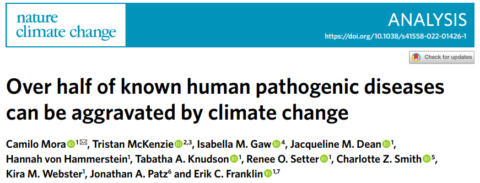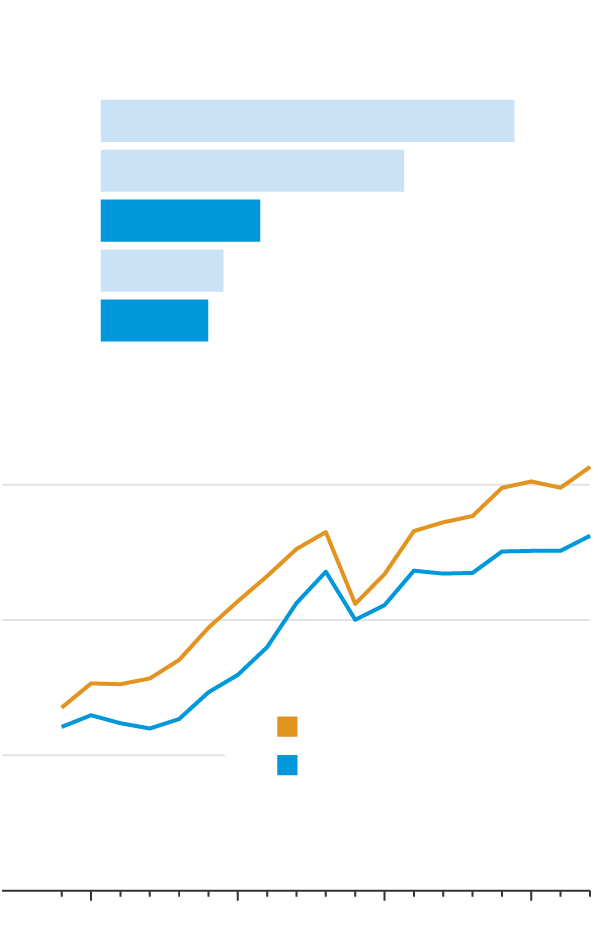The Spread Of Pathogenic Fungi: A Climate Change Consequence

Table of Contents
Warming Temperatures and Fungal Growth
Rising global temperatures are creating significantly more favorable conditions for the growth and reproduction of pathogenic fungi. This translates to increased infection rates and geographical expansion of these organisms.
Increased Optimal Growth Temperatures
Many pathogenic fungi thrive within specific temperature ranges. As global temperatures rise, these optimal growth temperatures are becoming more widespread, allowing fungi to flourish in previously unsuitable regions.
- Examples of expanding ranges: Candida auris, a multi-drug resistant fungus, is increasingly prevalent in warmer climates globally. Similarly, the range of Coccidioides, a fungus causing Valley Fever, is expanding due to warmer, drier conditions.
- Temperature thresholds: Many fungi exhibit exponential growth within a temperature range of 20-30°C (68-86°F). As average temperatures increase, even slight changes can significantly impact fungal growth rates and reproduction.
- Impact on incubation periods: Warmer temperatures often shorten the incubation period of fungal infections, leading to faster disease progression and potentially more severe outcomes. This is particularly crucial in immunocompromised individuals.
Scientific studies, such as those published in The Lancet Planetary Health and Nature Climate Change, provide substantial data supporting the direct correlation between warming temperatures and increased fungal activity and pathogenicity.
Altered Precipitation Patterns
Changes in rainfall and humidity significantly impact fungal spore dispersal, survival, and overall population dynamics.
- Impact of droughts and floods: While droughts can initially reduce fungal growth in some regions, they can also concentrate fungal populations in remaining moisture pockets, leading to outbreaks. Conversely, floods can create ideal conditions for fungal growth in waterlogged areas, promoting widespread spore dispersal.
- Soil moisture content: Changes in soil moisture directly influence fungal growth and survival. Increased humidity creates ideal conditions for many pathogenic fungi, whereas extended periods of drought can cause stress and mortality, but can also lead to concentrated outbreaks.
- Increased airborne fungal spores: Altered wind patterns due to climate change can enhance the dispersal of fungal spores over larger distances, increasing the potential for new infections and the spread of fungal diseases to previously unaffected regions. For example, increased wind events during dust storms can spread spores of desert fungi like Coccidioides far beyond their traditional range.
The intricate interplay between temperature and precipitation clearly demonstrates how altered climate patterns amplify the risks associated with pathogenic fungi.
Weakened Immune Systems and Increased Susceptibility
Climate change isn't just affecting fungal growth; it's also compromising the immune systems of both humans and ecosystems, leaving them more vulnerable to fungal infections.
Climate Change Impacts on Human Health
Extreme weather events, air pollution, and resource scarcity induced by climate change collectively weaken human immune systems, creating a fertile ground for fungal pathogens.
- Immunocompromised individuals at higher risk: Individuals with pre-existing conditions, such as HIV/AIDS, cancer, or diabetes, are particularly susceptible to opportunistic fungal infections. Climate change exacerbates this vulnerability.
- Malnutrition and fungal infections: Climate change impacts food security, leading to malnutrition, which weakens the immune system and increases susceptibility to fungal infections.
- Increased hospital admissions: A growing body of evidence indicates a correlation between climate change-related events and an increase in hospital admissions for fungal diseases, especially in vulnerable populations.
Research published in various medical journals demonstrates a clear link between climate change-induced stress and increased susceptibility to fungal infections.
Impact on Ecosystem Health and Biodiversity
The weakening of plant and animal immune systems due to climate change has devastating consequences for ecosystem health and biodiversity.
- Fungal diseases affecting crops and wildlife: Climate change is fueling the spread of fungal diseases affecting vital crops and wildlife populations, threatening food security and biodiversity. Examples include the devastating impact of fungal blight on staple crops.
- Role of fungi in ecosystem collapse: The widespread mortality of plants and animals due to fungal diseases can lead to cascading effects within ecosystems, potentially resulting in ecosystem collapse.
- Interconnectedness of fungal diseases: Fungal diseases often exhibit complex interactions within ecosystems, impacting various trophic levels and contributing to biodiversity loss.
The ecological consequences of climate change-driven fungal outbreaks are far-reaching and demand immediate attention.
Geographic Expansion of Pathogenic Fungi
Climate change is facilitating the geographic expansion of pathogenic fungi, enabling them to invade new territories and establish themselves in previously unsuitable environments.
Range Shifts and Invasive Species
Warmer temperatures and altered precipitation patterns are allowing pathogenic fungi to shift their geographic ranges, expanding their reach into new regions.
- Examples of expanding fungi: Many fungal pathogens are expanding their ranges, impacting both human and ecological health.
- Human transportation: Human activities, such as international trade and travel, play a significant role in the unintentional spread of fungal pathogens across geographical boundaries.
- Impact of invasive fungal species: Invasive fungal species can outcompete native species and disrupt ecosystem dynamics, contributing to biodiversity loss.
The rapid expansion of pathogenic fungi poses a significant challenge to global health security and ecosystem stability.
Emerging Fungal Diseases
Climate change is not only expanding the ranges of existing fungal pathogens but also contributing to the emergence of novel fungal diseases.
- Examples of emerging fungal pathogens: The increasing prevalence of novel fungal diseases highlights the dynamic nature of fungal pathogen evolution and dispersal.
- Challenges in diagnosis and treatment: Diagnosing and treating novel fungal infections can be particularly challenging, requiring advanced diagnostic tools and novel antifungal therapies.
- Enhanced surveillance: Strengthened surveillance and monitoring systems are crucial for early detection and prompt response to emerging fungal threats.
The emergence of new and more virulent fungal diseases underscores the urgent need for proactive measures to prevent and manage fungal outbreaks.
Conclusion
In conclusion, the evidence strongly supports the link between climate change, increased temperatures and humidity, and the expansion of pathogenic fungi. This expansion leads to increased susceptibility of humans and ecosystems to fungal diseases, posing a significant threat to global health and environmental stability. The spread of pathogenic fungi represents a major consequence of climate change, demanding urgent action. We must support crucial research into fungal pathogenesis and disease management, promote sustainable agricultural practices to reduce the impact of fungal diseases on crops, and advocate for robust climate-friendly policies to curb the ongoing expansion of pathogenic fungi spread. For further reading on this critical issue, explore resources from the World Health Organization and the Centers for Disease Control and Prevention on climate change and infectious diseases. Addressing this challenge requires a global, multi-faceted approach to mitigate the escalating threat posed by the spread of pathogenic fungi.

Featured Posts
-
 Apple Stock Aapl Price Prediction Crucial Levels To Consider
May 25, 2025
Apple Stock Aapl Price Prediction Crucial Levels To Consider
May 25, 2025 -
 2 Drop In Amsterdam Stock Exchange Following Trumps Latest Tariffs
May 25, 2025
2 Drop In Amsterdam Stock Exchange Following Trumps Latest Tariffs
May 25, 2025 -
 Atp Masters 1000 Indian Wells Drapers Breakthrough Win
May 25, 2025
Atp Masters 1000 Indian Wells Drapers Breakthrough Win
May 25, 2025 -
 Czy Porsche Cayenne Gts Coupe To Idealny Suv Moje Doswiadczenia
May 25, 2025
Czy Porsche Cayenne Gts Coupe To Idealny Suv Moje Doswiadczenia
May 25, 2025 -
 Porsche Atidare Nauja Greitojo Ikrovimo Stotele Europoje
May 25, 2025
Porsche Atidare Nauja Greitojo Ikrovimo Stotele Europoje
May 25, 2025
